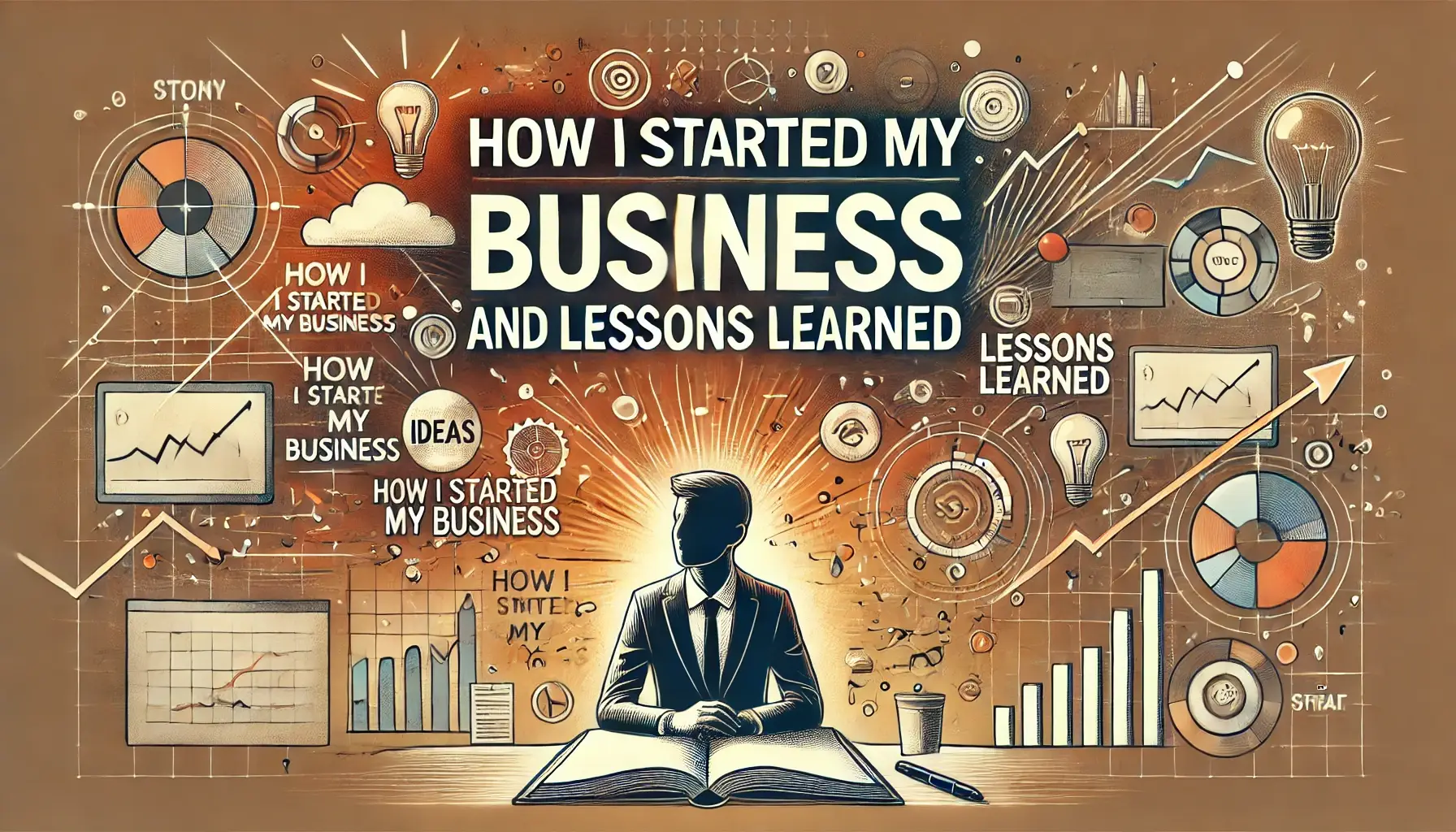Starting an online business in Pakistan is becoming more popular as more people look for ways to earn money from home. The rise of e-commerce platforms, social media, and easy-to-use payment services such as JazzCash and EasyPaisa has made it simpler for aspiring entrepreneurs to enter the digital marketplace.
In the past few years, people across Pakistan have launched businesses in areas like clothing, beauty, tech gadgets, and digital services.
Whether you’re selling locally or targeting international markets, the opportunities are endless. With platforms like WooCommerce and Shopify, setting up your store has become straightforward.
Starting an online business in Pakistan is a great way to become your own boss and reach customers across the country and beyond— Visual Pakistan
Table of Contents
ToggleWhy Start an Online Business in Pakistan?
I decided to start my own online store after realizing that 9-to-5 jobs weren’t for me. I wanted flexibility, control over my time, and the freedom to explore something I was passionate about. Starting an online business gave me the chance to be my own boss, and it’s a path I’d recommend if you’re looking to break free from routine and build something meaningful.
Key Takeaways from my Experience
| Key Point | Summary |
| Flexibility | You can start small with little investment. |
| Niche Selection is Important | Focus on products/services in demand. |
| Legal Registration is Crucial | Register your business to avoid issues. |
| SEO and Marketing | Help customers find your business online. |
| Customer Service Matters | Good service builds long-term success. |
How I Started My Business and Lessons Learned

1. Find a Business Idea and Niche
Brainstorm Business Ideas
When I started, I chose clothing accessories because it aligned with my passion, but I soon realized that market demand is equally important. Your idea must solve a problem or offer value to customers. Focusing on products that interest you will keep you motivated and improve customer engagement.
Use Research Tools
I used Google Trends, social media, and Facebook groups to identify what products were trending. This helped me spot gaps, like offering custom eco-friendly products, that set me apart from competitors. Knowing what others are selling allowed me to find ways to innovate and attract the right audience.
Select a Niche with Demand
At first, I experimented with multiple product categories, but shifting focus to caps, scarves, and tote bags simplified my strategy. Choosing a niche with steady demand but moderate competition allowed me to grow without overwhelming challenges. Staying focused also helped me build a stronger, more recognizable brand.
Choosing the right niche is the foundation of any successful business
– Visual Pakistan
MARKAZ Platform
If you don’t want the hassle of managing inventory, MARKAZ is a great option. I used it to sell products without handling storage or delivery, which saved time and effort. It connects you with suppliers and manages logistics, making it easier to start a business quickly with low overhead.
2. Create a Business Plan
Creating a business plan helps you stay organized and ensures long-term success. Your plan should cover:
Revenue Model
When starting my store, I chose the B2C model because it allowed me to sell directly to customers through my e-commerce site. It was ideal since I could engage with buyers and build relationships quickly.
Later, I explored affiliate marketing, where I promoted other products for commissions—this helped diversify my income without managing inventory. If you prefer selling in bulk, a B2B model might suit you better, especially if working with wholesalers or corporate clients.
Budgeting
In the beginning, I underestimated some startup costs, like domain registration, hosting fees, and packaging materials, which ate into my profits. To stay on track, I created a budget on Google Sheets to monitor my cash flow.
I also set aside a portion of my budget for paid ads and promotional campaigns—this was a game-changer for attracting customers early on. As my business grew, I adjusted expenses based on performance to ensure smooth operations without overspending.
Managing Expenses
Managing expenses efficiently was one of the biggest lessons I learned. I used Wave to track every transaction and organize invoices, which helped me stay on top of my cash flow.
Regularly reviewing my profit margins allowed me to identify areas where I could cut unnecessary costs—like switching from premium packaging to more cost-effective options. I also automated bill payments and invoicing, which saved time and ensured I never missed a payment, avoiding potential disruptions.
A goal without a plan is just a wish. – Visual Pakistan
3. Register Your Business
Legal registration not only ensures you follow the law but also builds trust with customers.
Legal Registration and Customer Trust
When I launched my business, I didn’t realize how much trust registration builds with customers until a few of them asked if my store was officially registered.
That’s when I decided to register with the SECP, and the trust boost was immediate—customers felt more confident ordering from me, knowing they were dealing with a legitimate business. Beyond credibility, registration gave me peace of mind, knowing my business name was protected from misuse or disputes.
Register with SECP
The SECP registration process was simpler than I expected. I registered online through their e-services portal and chose the sole proprietorship model, which worked best for my small business.
Registering also opened new opportunities—banks and corporate clients were much more willing to work with me once I had a legal presence. Having the proper structure also made it easier to apply for financing and government support programs designed for small businesses.
Get Your NTN and Sales Tax Registration
Applying for my National Tax Number (NTN) through FBR was an essential step, especially when I started dealing with B2B clients, as many vendors asked for it. It’s also mandatory for filing returns, which kept me compliant and avoided any legal issues.
Since I sell some taxable products, I made sure to register for sales tax—this not only kept my business legally sound but also allowed me to claim tax refunds and benefits. These small steps have saved me from fines and ensured smooth operations as I scale.
Registering your business today protects your business tomorrow.
– Visual Pakistan
4. Set Up Payment Methods
Offering easy payment options helps you gain customers’ trust and ensures smooth transactions.
Local Payments
In my experience, JazzCash and EasyPaisa were essential from day one. Many of my customers preferred these mobile wallets because they offered instant payments, which made the buying process smooth.
Once I integrated these options, I noticed repeat purchases increased since customers found the transactions quick and hassle-free. Mobile payments are especially helpful when customers want to pay on the go without dealing with cash.
Bank Transfer Option
I also offered bank transfer options to accommodate customers who preferred traditional methods, particularly for large orders.
Some older clients or businesses I worked with felt more comfortable using direct bank transfers, and adding this option made sure I didn’t miss out on those sales. It’s important to cater to all customer preferences, so having multiple payment channels gave me an edge.
International Payments
Since I wanted to expand internationally, setting up a Payoneer account was crucial. It allowed me to receive payments from overseas clients smoothly, especially when working on freelance projects.
Although PayPal isn’t as widely available in Pakistan, Payoneer covered most of my needs. Adding international payment methods opened doors to global customers, boosting both my sales and reach beyond local markets.
| Payment Method | Best For |
| JazzCash/EasyPaisa | Local transactions |
| Bank Transfers | Customers without mobile wallets |
| Payoneer/PayPal | International customers |
5. Create a Website
Creating a website is essential for any online business. Here’s how to do it:
Select a Platform
When I started, I chose Shopify because of its easy setup and built-in tools, which allowed me to launch my store without much technical knowledge.
Shopify’s intuitive interface made managing products and orders straightforward, saving me time. However, if you’re comfortable with a bit of technical work, WooCommerce with WordPress offers more customization.
I stuck with Shopify because it fit my budget and growth plans, but both platforms have their advantages depending on your needs.
Mobile-Friendly Design
Early on, I realized that most of my customers were browsing on their phones, so having a mobile-optimized site was critical. Shopify’s themes made it easy to ensure my website was responsive and fast-loading on all devices.
After optimizing for mobile, I noticed a drop in bounce rates and an increase in customer engagement. A seamless mobile experience is essential, especially since Google ranks mobile-friendly sites higher in search results.
Add Clear Product Descriptions
One of the first things I learned was the power of SEO-friendly product descriptions. I used simple language to explain product features and benefits, ensuring customers understood what they were buying.
Adding high-quality images with alt text made my listings more engaging and improved their visibility on Google.
After refining my descriptions and using bullet points for readability, I saw a noticeable increase in organic traffic and conversions. Clear, optimized content really does make a difference.
Your website is your storefront—make it inviting. – Visual Pakistan
Growing and Running Your Business

1. Use Marketing to Attract Customers
To grow your business, you’ll need effective marketing strategies.
Social Media Marketing
Promote your business on platforms like Instagram, Facebook, and TikTok to connect with a wider audience. Share engaging content such as product photos, videos, and customer testimonials to build trust and drive sales.
Use trending hashtags, reels, and interactive stories to increase visibility and encourage engagement with your brand. Consistently posting helps you grow your following and build brand loyalty over time. I was experience with Meta Ads (Fb Ads, Instagram Ads) which is batter than Tiktok Ads.
If you want to learn how to effectively use ad platforms like Google Ads and Facebook Ads, check out our Digital Marketing Course.
SEO-Friendly Content
Write SEO-optimized blogs, product descriptions, and landing pages to help your site rank higher on Google. Use relevant keywords naturally throughout the content and create engaging titles to attract more clicks.
Focus on solving customer problems through your content to keep visitors on your site longer, which improves your SEO ranking. Optimizing metadata and adding internal links further enhances your search visibility.
Paid Ads
Use Facebook Ads or Google Ads to target specific audiences and generate quick traffic to your store. Set up ads based on customer demographics, interests, or search behavior to maximize conversions.
Retargeting ads remind visitors who didn’t purchase to come back and complete their order. Paid ads are a great way to boost brand awareness, drive sales, and scale your business quickly.
| Marketing Platform | Purpose |
| Instagram/Facebook | Build a social media presence |
| SEO | Drive organic traffic |
| Paid Ads | Increase visibility with ads |
2. Source Products and Manage Inventory
Managing your products efficiently ensures smooth operations.
Local Suppliers
Work with local manufacturers to get products delivered faster and reduce shipping costs. Local partnerships help you maintain quality control and build stronger supplier relationships. Faster delivery also improves customer satisfaction, making them more likely to buy from you again.
Dropshipping
Choose dropshipping if you want to avoid managing inventory yourself. The supplier handles storage and shipping, sending products directly to your customers. This model lowers startup costs and simplifies operations, making it easier to focus on marketing and sales.
If you’re interested in mastering online selling and e-commerce strategies, explore our comprehensive E-Commerce Course.
| Feature | Local Suppliers | Dropshipping Platforms |
| Inventory Management | You manage inventory and storage yourself. | No inventory to manage; suppliers ship directly. |
| Delivery Time | Faster delivery due to local sourcing. | Longer delivery times, especially with international suppliers. |
| Quality Control | Direct control over product quality and packaging. | Limited control over product quality since suppliers handle fulfillment. |
| Startup Costs | Higher initial costs due to bulk purchasing and storage. | Lower startup costs with no need for inventory. |
| Risk Level | Higher risk if stock doesn’t sell quickly. | Lower risk, as you only pay when a sale is made. |
Return Policy
Provide a hassle-free return policy to build trust with your customers. Easy returns show customers that you care about their satisfaction, encouraging them to shop with confidence. A good return policy can also reduce complaints and improve your brand’s reputation.
Inventory management is key to keeping customers happy.
– Visual Pakistan
3. Provide Great Customer Service
Good customer service helps retain customers and builds your reputation.
Respond Quickly
Use live chat, email, or phone support to answer customer queries promptly and build trust. Quick responses show customers you value their time, improving satisfaction and increasing the chances of conversion.
Reward Loyalty
Offer discounts, coupons, or loyalty rewards to keep customers coming back. Recognizing loyal customers strengthens relationships and encourages repeat purchases, boosting long-term revenue.
Learn from Feedback
Collect and analyze customer feedback to identify areas for improvement. Listening to your customers helps you solve issues early and refine your products or services for better experiences.
4. Grow Your Business Over Time
Growing your business requires continuous effort and monitoring.
Track Results
Use Google Analytics to monitor website performance, track visitor behavior, and identify top-performing products. Analyze metrics like traffic sources, bounce rates, and conversions to refine your strategies.
Regular tracking helps you understand what’s working and where improvements are needed, driving better results over time.
Expand Your Product Line
Once your business is stable, introduce new products or services that align with customer needs. Expanding your offerings keeps your audience engaged and attracts new customers. Use sales data and feedback to identify gaps or complementary products that can increase your revenue streams.
Automate Processes
Implement email marketing tools to engage customers with automated newsletters, abandoned cart reminders, and personalized offers.
Automation saves time, reduces manual work, and ensures consistent communication with your audience. This helps boost customer retention, improve sales, and scale your business more efficiently.
The key to success is continuous improvement. – Visual Pakistan
Frequently Asked Questions (FAQs)
What is the easiest online business to start in Pakistan?
Dropshipping, blogging, and affiliate marketing are some of the easiest ways to start with low investment. These require minimal inventory and can be managed from home.
Do I need to register my online business?
Yes, it’s important to register with SECP to avoid legal issues and build customer trust. Registration also gives your business a professional identity.
Which payment methods can I use?
For local payments, JazzCash, EasyPaisa, and bank transfers are popular options. For international customers, use Payoneer or PayPal.
How can I find the right niche?
Use tools like Google Trends and research social media trends to find a niche with good demand but limited competition.
How long does it take to make money from an online business?
It depends on your niche, marketing efforts, and dedication. Some businesses may take a few months to generate profit, while others might take longer.
Conclusion
Starting an online business in Pakistan is an excellent way to earn money, whether you want to sell products, provide services, or explore dropshipping.
With the growing e-commerce industry and payment platforms like JazzCash and EasyPaisa, anyone can set up a business with minimal investment. Need help launching your business? Contact us for consulting!
Starting an online business is not easy, but with patience and consistency, success will follow. – Visual Pakistan
